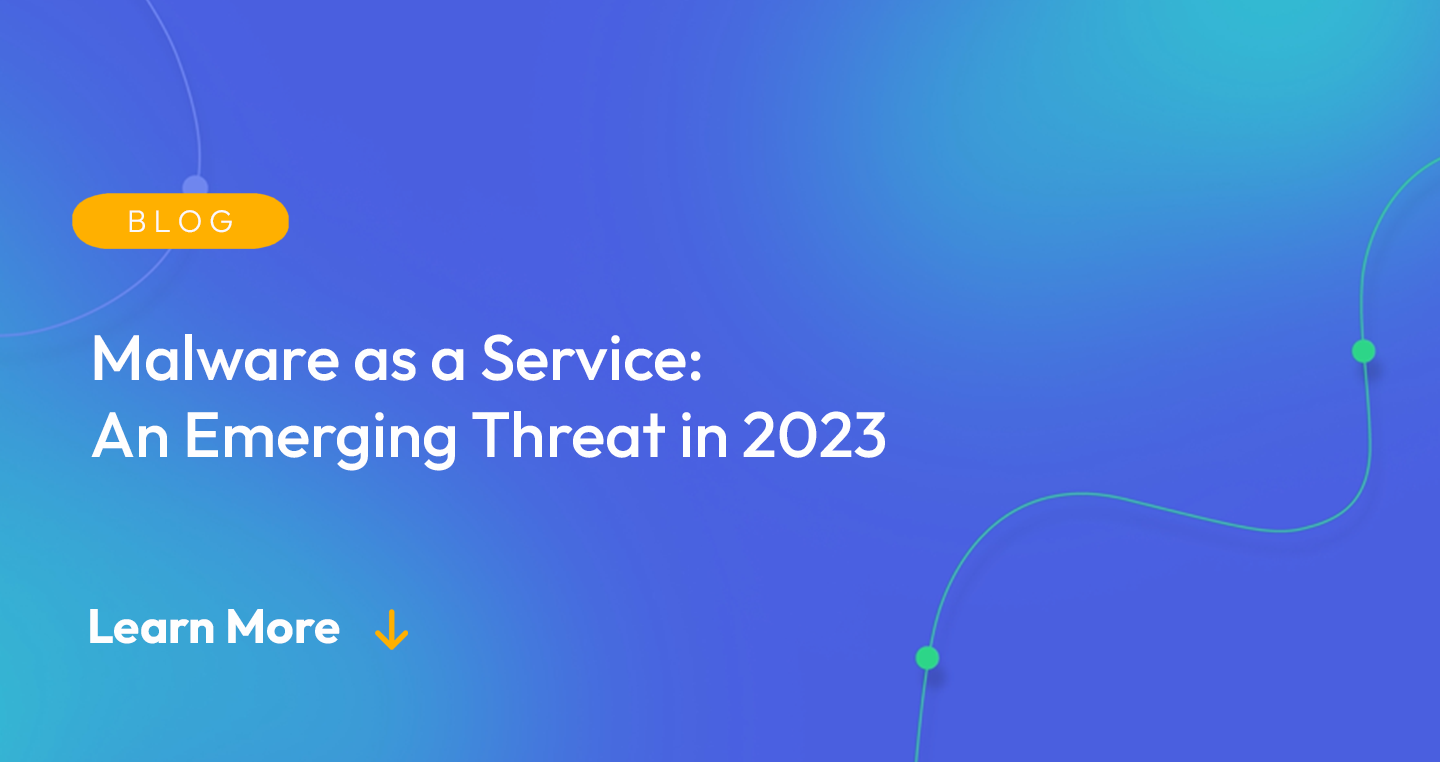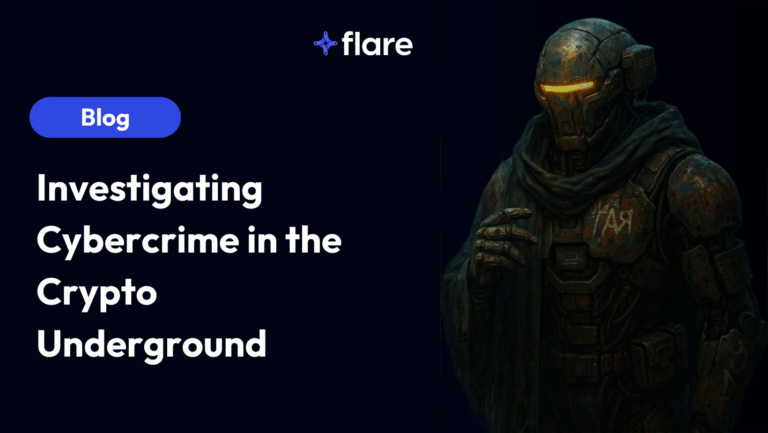
We updated this article on October 19, 2023, to include information about RedLine and META stealer malware.
Capitalizing on the convenience of the Software as a Service (SaaS) model, malicious actors are offering Malware as a Service (MaaS): ready-made malware packages on the dark web, presenting less technical individuals with the opportunity to launch sophisticated cyber attacks.
Understanding the Rise of Malware as a Service (MaaS)
The concept of Malware as a Service (MaaS) isn’t entirely new; however, the scale and sophistication of its operations have surged notably in recent years, making it a significant concern in 2023. In essence, MaaS operates on a business model similar to legitimate Software as a Service (SaaS) platforms. It offers pre-packaged malware solutions on the dark web, available for purchase or rent by cybercriminals.
According to Accenture’s research, in 2022, RedLine stealer malware was the most popular variant, accounting for 56% of infostealers in July 2022 and 48% in October 2022. However, the new META stealer malware is gaining traction, and threat actors advertise it as the “improved” version of RedLine.
MaaS and the Commodification of Cybercrime
This model has made cybercrime more accessible, allowing even those with minimal technical skills to launch damaging cyber attacks. By simplifying the process, MaaS providers are essentially commodifying cybercrime, creating a thriving underground marketplace that mirrors the legitimate economy in its complexity and robustness.
Reasons for the Rise of MaaS
- Increasing digitization of our lives: This has expanded the potential target pool for cyberattacks. Every smartphone, computer, and IoT device is a possible entry point.
- Lucrative potential of cybercrime: Coupled with the relative anonymity offered by the internet, more threat actors are drawn to take part.
- Cybersecurity skills shortages globally: Many businesses are not adequately equipped to defend against these threats, making them easy targets. Lastly, the advancement in technology has allowed for more sophisticated and harder-to-detect malware to be developed and disseminated, increasing the appeal and effectiveness of MaaS.
In 2023, MaaS emerged as a profound threat not just due to its potential for damage, but also because of the challenge it presents to traditional cybersecurity defenses. Its growth signals a shift in the cybersecurity landscape, with cyber threats becoming more democratized, commercialized, and therefore, more difficult to combat. It underscores the need for adaptive, intelligent solutions to keep pace with the evolving threat scenario.
The Economics of MaaS: Why it’s a Growing Threat in 2023
The financial dynamics underpinning Malware as a Service (MaaS) have played a significant role in its burgeoning presence in the cyber threat landscape of 2023. Its economic model has made cybercrime not only more accessible but also more financially attractive to a broad range of malicious actors.
MaaS and the Shift Away from Traditional Cybercrime
In traditional cybercrime, threat actors had to invest a significant amount of time, skill, and resources to develop potent malware. This often acted as a barrier to entry for many would-be cybercriminals.
Lower Barrier to Entry with MaaS
However, with the advent of MaaS, this barrier has significantly lowered. MaaS platforms offer a broad range of malware options, from ransomware to botnets, at relatively affordable prices. In some instances, they even offer ‘malware-for-hire’ models, where the service provider also executes the cyber attack on behalf of the client.
The ability to purchase or rent malware allows individuals or organizations with malicious intent to launch cyber attacks with minimal upfront investment. This significantly increases the potential for high returns, making MaaS a lucrative prospect for cybercriminals.
Expanded MaaS Offerings
Moreover, the MaaS market’s economics are further driven by supply and demand dynamics. As data becomes the new oil, the demand for ways to illicitly acquire, manipulate, and exploit this data has grown exponentially. MaaS providers, seizing this opportunity, have expanded their offerings and operations, creating a vicious cycle that further propels the growth of MaaS.
MaaS’s Rapid Innovation
In addition, the MaaS economy is sustained by its ability to innovate rapidly, continually developing and updating malware to evade detection and stay ahead of cybersecurity measures. Some MaaS platforms even offer customer support and regular software updates, much like legitimate SaaS providers, ensuring their ‘customers’ get value for their money and continue their patronage.
The result is an escalating threat that is simultaneously more accessible, profitable, and hard to combat. It’s a potent reminder that the fight against cybercrime isn’t just about technology and strategy – it’s also about understanding and disrupting the economic incentives that fuel such activities.
The Direct Impact of MaaS on Businesses and Cybersecurity
The advent of Malware as a Service (MaaS) has significantly amplified the risk and potential damage to businesses and the broader cybersecurity landscape. MaaS essentially widens the attack surface, enabling a larger group of cybercriminals to execute sophisticated cyber attacks that were previously beyond their technical reach.
For businesses, the direct impacts are multifaceted and potentially devastating. A successful malware attack can lead to significant data breaches, resulting in the loss of sensitive customer data, intellectual property, and internal communications. The financial implications of these breaches are substantial, including:
- regulatory fines
- litigation costs
- expenses associated with remediation efforts.
Operations Disruptions from MaaS
An attack can lead to operational disruptions, damaging the company’s productivity and ability to provide services. In the case of ransomware, a type of malware commonly provided as a service, key systems and data can be held hostage, halting operations until a ransom is paid – or systems can be restored.
MaaS Damages Brand Reputation
Beyond the immediate financial and operational impacts, a malware attack can also inflict long-term damage on a business’s brand. In an era where data privacy and security are paramount to consumers, a breach can lead to a loss of trust that ultimately impacts customer retention and acquisition.
Strain on Cybersecurity Practitioners
The proliferation of MaaS compounds the challenges faced by security professionals. The democratization of cybercrime means that threats can now originate from virtually anywhere and any entity, making the task of threat detection and prevention increasingly complex. Moreover, the frequent updates and evolution of malware offered as a service mean that cybersecurity defenses must continuously adapt to keep pace with new threats.
Overall, the emergence of MaaS in 2023 represents a seismic shift in the threat landscape, with severe implications for businesses and the cybersecurity industry. It underscores the urgency for more sophisticated, proactive, and resilient cybersecurity strategies to counter this growing menace.
Strategic Defenses: Combatting the MaaS Phenomenon
As Malware as a Service (MaaS) continues to rise as a formidable threat in 2023, businesses and cybersecurity professionals must adopt more proactive and innovative strategies to counter this menace. The defense against MaaS is a multifaceted effort that encompasses advanced technology, comprehensive threat intelligence, and a cultural shift towards enhanced cyber hygiene.
1. Advanced Cybersecurity Technology:
Harnessing the power of cutting-edge technology is critical to keep pace with the rapidly evolving MaaS landscape. Deploying machine learning and artificial intelligence can help identify unusual patterns of behavior that may indicate a malware attack. Furthermore, investing in robust intrusion detection and prevention systems, firewalls, and endpoint security can add multiple layers of defense.
2. Threat Intelligence:
Understanding your enemy is a critical component of any defense strategy. Cyber threat intelligence platforms, like ours, provide insights into the latest malware threats, including those offered as a service. These platforms collect data from various sources, analyze it, and provide actionable intelligence, helping businesses anticipate and mitigate potential cyber attacks.
3. Security Awareness and Training:
Since MaaS allows even non-technical individuals to launch cyberattacks, everyone connected to your network becomes a potential threat vector. Regular security awareness training for all employees is a must. Such training should include recognizing and reporting potential threats, understanding the importance of regular software updates, and reinforcing good password practices.
4. Incident Response Planning:
Despite the best defenses, a determined cybercriminal may still breach your security. As such, having a well-defined and practiced incident response plan is crucial. It ensures any attack is detected, contained, and eradicated as quickly as possible, minimizing damage.
5. Collaborative Defense:
Cybersecurity is a collective challenge that requires a collective response. Sharing threat intelligence with other businesses, participating in industry cybersecurity forums, and collaborating with law enforcement agencies can create a unified front against the threat of MaaS.
Combatting the MaaS phenomenon is no small task, but neither is it an insurmountable one. By understanding the threat, leveraging advanced cybersecurity technology, promoting security awareness, planning incident responses, and embracing collaboration, businesses can mount a robust and effective defense against this emerging menace.
Monitoring for MaaS with Flare
Malware as a Service (MaaS) in 2023 represents a grave and evolving threat to organizations worldwide. The dangers facing our cybersecurity landscape have grown both in scale and sophistication as MaaS becomes more widely accessible.
Flare is closely monitoring the increasing commodification of cybercrime as we search across illicit sources for any external threats to organizations. Check out our free trial to see how we can support protecting your organization against MaaS.





